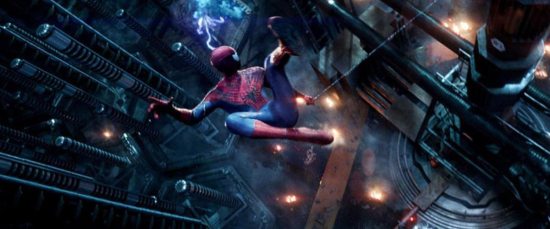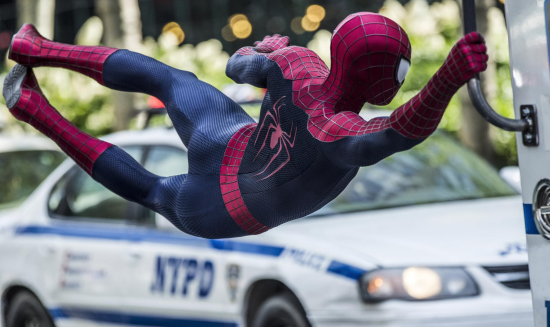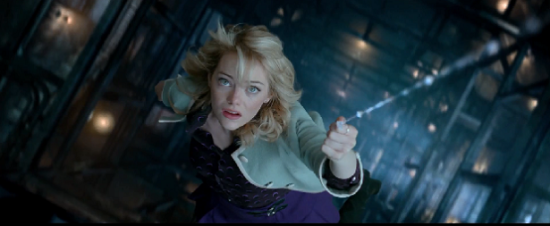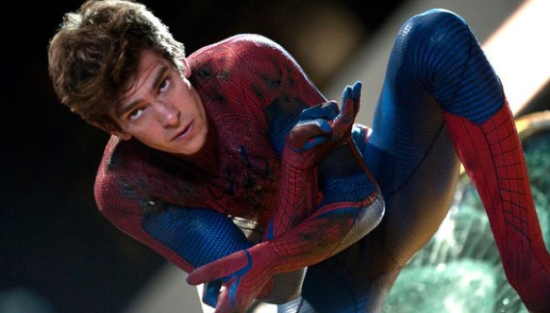Cobwebs
Redundant Spider-Man Franchise Dangles By a Thread
Even the nerdiest members of that dead cultural movement known as fanboys must admit that rebooting Sam Raimi’s “Spider-Man” is/was a mistake. It’s bad enough that the franchise lost Raimi, along with the ideally cast Tobey Maguire and Kirsten Dunst.
For Sony’s franchise producers to go back to square one in retelling Spidey’s origins all over again, only to perform a weird re-imagining of Raimi’s “Spider-Man 2” as a follow-up, isn’t merely redundant, but pure folly.
Forget that Sam Raimi’s “Spider-Man 2” (2004) set a high water mark for the comic-book movie genre that was only matched (not surpassed) in 2008 by Christopher Nolan’s “The Dark Knight.” Though uninitiated audiences may be awed by the new version’s dazzling application of 3D technology, which allows the audience to experience Spidey’s giddy inertia as he dives between Manhattan skyscrapers while firing long streams of powerful webbing, the movie is a mess. “The Amazing Spider-Man 2” wears out its welcome long before its protracted 141-minute running time draws to an end.
You might buy into the freshly minted Andrew Garfield as an overly lanky version of Peter Parker (a.k.a. Spider-Man), but you’ll be hard-pressed to find an iota of identification with the film’s generic villain du jour Electro (Jamie Foxx). Foxx’s nerd-cum-supercreep is given such short shrift by the film’s team of four screenwriters that you can barely recall his nom de guerre by the time you exit the cinema. By-committee scripts rarely, if ever, deliver memorable movies. “Spider-Man 2” provides one more piece of evidence.
The brief introduction of a tattooed, baldheaded Paul Giamatti — as a rapscallion named Aleksei Sytsevich (a.k.a. Rhino) — gives Spidey an opportunity to show off his web-slinging stuff on New York City’s busy streets. Inexplicably, Giamatti’s bomb-crazed character bookends the movie as apparent foreshadowing bait for future films in the series.
God help us.
During the chase, Spidey saves Jamie Foxx’s civilian character Max Dillon. The masked crime fighter even takes the trouble to retrieve blueprints the bespectacled Max was carrying before getting knocked down. Spidey’s impromptu pep talk to Max — about how he relies on this meek citizen’s help — inspires in Max the same kind of goofy hero-worship that cosplay geeks are inclined to shamelessly flaunt in public places.
Coincidentally, Max works as an engineering technician at Oscorp, the diabolical corporation where Peter Parker’s on-again-off-again girlfriend Gwen Stacy (Emma Stone) is also employed.
Alas, a tragic accident involving a giant vat containing a gaggle of electric eels — where is OSHA when you need them? — transforms Max into an unstable vessel of electromagnetic energy, now named Electro. Needless to say, Max’s former high esteem of Spider-Man is lost after the metamorphosis.
As in Sam Raimi’s “Spider-Man 2,” Oscorp is owned by Parker’s old high school pal Harry Osborn (played this time around by Dane DeHann, replacing James Franco from Raimi’s film). Harry’s own villainous transformation — into Green Goblin — only serves to remind audiences familiar with Raimi’s version of how inferior this one is. Although the screenwriters labor visibly at developing character traits and motivations for DeHann’s embattled Harry Osborn, their efforts are for naught. When Green Goblin finally makes his inevitable appearance, all narrative synergy is displaced to a point of useless distraction.
The promise of Gwen being accepted into Oxford University in London puts a crimp in Peter’s muddled romantic intentions toward the blonde beauty. Ghostly visions of Gwen’s disapproving, and deceased, fire chief father (Dennis Leary) follow Peter around, reminding Peter to stay away from Gwen. The scriptwriters rightly emphasize Peter’s and Gwen’s romantic connection as the film’s primary narrative hook before eventually reneging on their promise. Emma Stone’s charms soften the overblown action on display. So it’s all the more disruptive when the screenwriters break a crucial law of dramaturgy that throws the film’s emotional foundation into doubt.
“The Amazing Spider-Man 2” is yet another in a long list of comic-book movie failures that serves to remind anyone not financially connected to Hollywood’s insistent zombie approach to fertilizing its bottom line with outdated methods that fanboy culture and comic-book movies are dead.
Rated PG-13. 141 mins.











